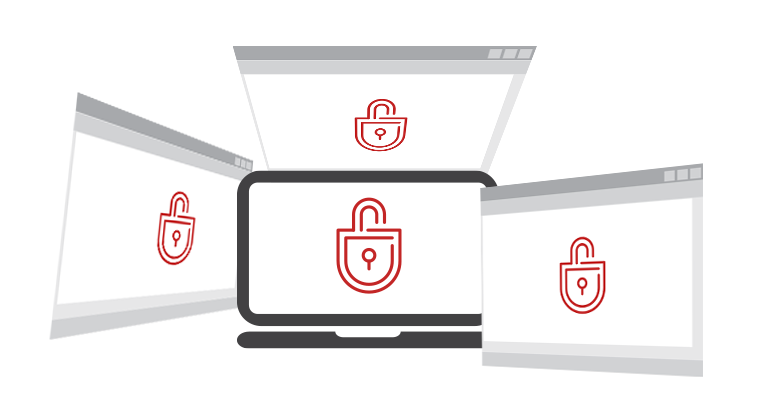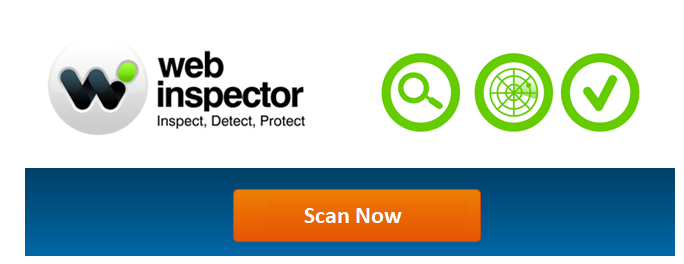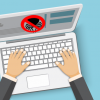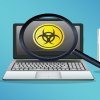Website protection is a critical component to secure websites and servers from cyberattacks. Nowadays several websites fall victim to cyber attacks (especially malware attacks). As a website owner or business owner, you might have put in so much of your time and effort to build your website (and your brand, of course), so you need to exercise caution when it comes to website protection.
Guide to Website Protection
Malware programs are one of the most dangerous security threats to your website. Malware can block you from accessing critical website information or hinder the normal functioning of your site!
This article on Website Protection guide helps you to improve the security of your website and gives a complete view on how to protect from malware.
You might be doing a regular back up of your website on a regular basis. In addition to that, the following tips will help keep your site safe and secure from any type of security threats including malware.Also check the steps below that is designed as Website Protection guide to remove malware from websites instantly
4 Security Tips to Website Protection
Update Your Website Software and CMS
You might be using a content management system (CMS) like WordPress, Joomla or Drupal, etc. A CMS is easy to use, and it is an excellent platform for managing your site, but if it is not updated from time to time, it can lead to cyber attacks.
CMS providers regularly release new updates and patches for their CMS products to provide a higher level of security and patch known vulnerabilities. Hence, it is important to make sure that your CMS, plugins, themes, extensions are up-to-date. This is one of the essential tips for website protection.
Use Web Application Firewalls
Web Application Firewalls serve as the shield for your website protection from malicious traffic and hackers. A web application firewall examines your website traffic on a regular basis.
It also analyses the source of the website traffic and the type of information requested by the source.
Based on all those factors, the Web Application Firewall allows the legitimate traffic and blocks the malicious ones like hackers and spambots.
Set Strong Passwords
Using a strong and complicated password that is hard to guess, for admin access, can serve as an extra layer of protection to your site. If you haven’t set a strong password, head to your CMS portal and change it right away.
A strong password is the one that contains more than eight alpha-numeric characters, i.e., with a mix of uppercase and lowercase letters, numbers, and special characters.
Use “HTTPS” Instead of “HTTP”
“HTTP” is not a secure internet protocol. So when you communicate across the network by using the HTTP protocol, anyone can eavesdrop on your communication easily. So if you want to transfer sensitive information across the internet, then it needs to be transported securely, and it should be accessible to authorized users (web servers) only. For these purposes only, HTTPS was created.
HTTPS is a combination of HTTP (Hypertext Transfer Protocol) and a network security protocol (SSL or TLS). HTTP operates at the higher layer of the TCP/IP model. The SSL or TLS protocols operate at the lower sublayer. It encrypts the HTTP message during transmission and decrypts an HTTP message upon arrival.
HTTPS is not completely unhackable, but it is still a robust way to send personal information across the internet. HTTPS prevents hackers from exploiting software vulnerabilities, brute forcing the users’ access controls and mitigates DDOS attacks (Distributed Denial of Services).Now you have read more on Website Protection guide, also check our Website Malware Scanner link below for complete website security
Comodo Advanced Website Protection Guide
With advanced threat detection capabilities along with static and dynamic machine learning-based signatures, Comodo Web Inspector can detect even the most tricky malware and vulnerabilities which are hard to detect with other free malware scanners.
Simply enter your website domain and start scanning your website for any potential threats. You can check your website for malware with these simple steps:
- Go to app.webinspector.com
- Enter your website address on the search box
- Click on the “Start The Scan” button
- In a few minutes, your website’s vulnerability report will be displayed
Once the web inspector completes the malware and vulnerability scanning process on your website, you can choose to receive our optional protection for $9.90 (only if you want to).
No Obligation, No Credit Card, No Questions Asked. Simple As That!
Get your website checked for malware and other vulnerabilities absolutely free of cost. Comodo Web Inspector will complete the scanning process in 3 simple steps. Check Your Site Today!
With cWatch, you don’t need to worry about your website protection as it will automatically detect and repair any website vulnerabilities that may occur on your site.








